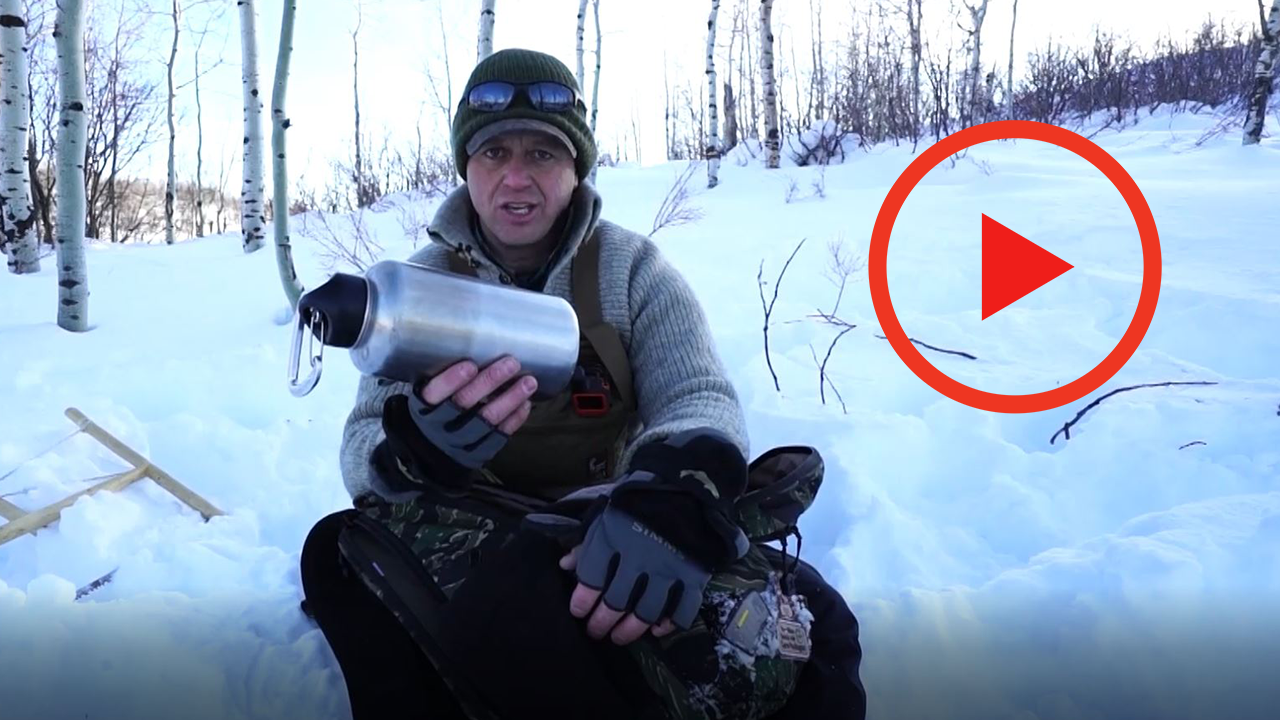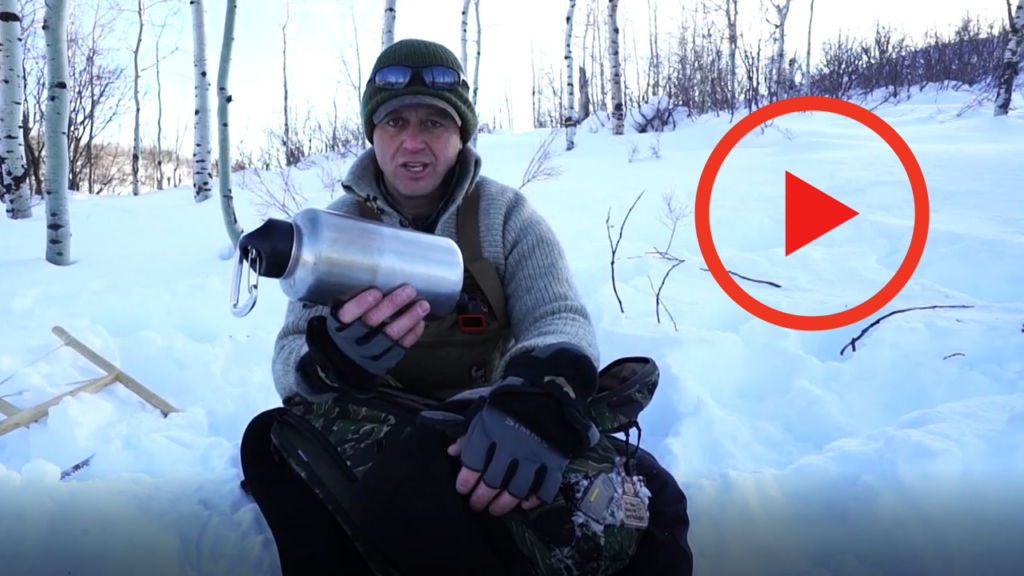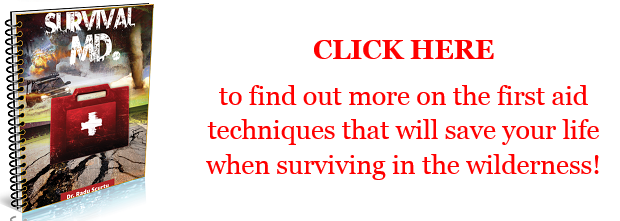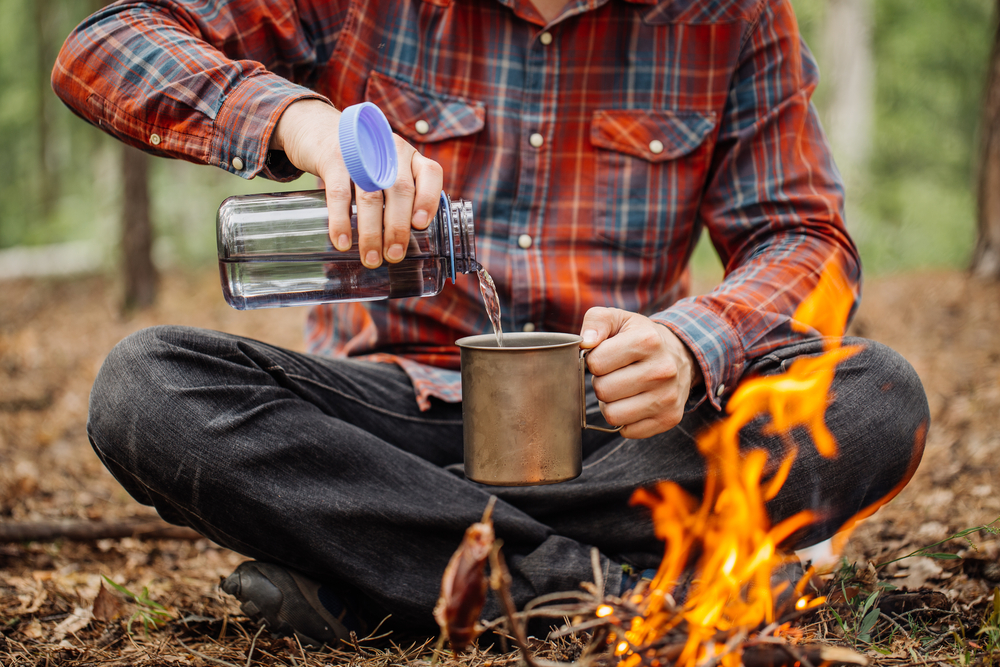Hey, this is Tyler with Survivopedia.
I want to do a winter EDC video. So, we’re gonna do that today. All right, winter EDC. We are here teaching we’re doing some videography, do a little bit of teaching in the backcountry, high altitude in the winter. So I want to talk a little bit about what I have, why I have that, and do that in the form of never-day carry or what should you bring if you’re in this kind of an environment.
So first off you got to wear the right kind of clothes.
Well, start from the bottom to the top, I have some La Sportiva boots on. What matters is their waterproof and their bulky.
Bulk is important because if you tighten your shoelaces down super tight and you can press all those socks, you’re basically taking all the way that all of the insulation value away you might as well just be laying right against cold snow.
So bulky is important.
Have wool socks on, wool base layer. Synthetic pants, synthetic shirts, and outer layer that is wool as well.
Everyone talks about layers and yes layers are important because you can take them off when you work too hard and you get sweaty, but it’s not about layers. It’s about centimeters or inches. And what I mean by that is this: this thick chunky wool sweater is warmer than seven layered shirts, right? Seven shirts are not going to be as warm as this sweater. So, think about volume that you can breathe through so that the perspiration can leave and it will hold dead air. That’s what causes installation. I’m warm right now. I feel great. It’s pretty darn cold. I know it’s below freezing right now. I don’t have the exact temperature. But I feel good. I feel like I’m in a warm pillow with this thing on, right.
The other thing you want to watch for is waterproof, at least gaiters if not pants, right? You’re going to kneel down. You’re going to sit and stuff. You need some sort of waterproof layer that will keep you dry. These are Gore-ex Pants. They have a built-in gaiter. Otherwise I would have gaiters on top of this. Gaiters have basically like black socks that keep the snow out of your boots. Nothing’s worse than having good clothes with snow in your boots. You might as well just be dumping ice down there. It’s horrific.
Okay, so that’s the basis on the clothes. Wear wool, wear good layers. If you’re going to be doing survival situations, Gore-Tex that can be removed with wool. Everything on the inside is just like the best answer.
Okay, so all survival is fire, water, shelter, food, communications, medical, and the ability to ready replenish all of those things. So, here’s the shelter that I’m wearing.
The next thing I’ve got right here, is I have two lighters in my vest. My wool vest here, and then I’ve got another lighter around my neck.
Why do I have so many of those? Redundancy is key when it comes to the number one thing that keeps me from freezing to death, the thing I need to boil water, the thing I need to cook. Can I make friction fire? Yes, out here it’s going to take me a day or two to find the right plants to make that happen.
I’ve got probably the ability to make some out of these quaking aspen friction fire. Quaking aspen friction fire kind of sucks. It puts out big chunks of black material. It smokes a lot before it actually ignites. You can do it, but if you don’t have to, you know, okay.
So, redundancy when it comes to fire.
I also have a knife, right? This is a Skookum Bush Tool, full tangs. So you can abuse it. It’s got an indestructible handle, a nice socket that you can run a bow drill. So if you do need to make a bow drill, that’s handy, it’s one less piece I got to make.
Something that can crush stuff with, be that to open acorns or whatever else I need to smash, pound a nail in whatever. Couple of strings right here, or holes for some string, 550 cords so I can put on a spear. It’s got a nice Scandinavian grind. So it’s going to make great feather sticks. Continuous curves so it’s going to cut, well, through woods. It’s going to gut fish well. It’s got a clipped tip because they break off quite often. You’ll be able to pelvis into a tree and a circle, take stuff down. Very utilitarian workhorse. I use the crap out of this knife. It is phenomenal. Look up the Skookum Bush Tool.
Let’s just talk about what’s in the chest rig. I have a Wuben flashlight. The cool thing about this Wuben C2 tool is that I can recharge phones with it.
Remember how I said: communications and the ability to replenish. I can’t do it indefinitely. The only way I could do that would be like a water turbine, a wind turbine, or solar panel, but this is going to last me plenty long. If I just turn this on in the mornings, turn it off all day long, turn it on in the evenings, send a text receive a text, I can go months. Add this big battery pack to it I can go even further, and then this battery pack also doubles as a flashlight, right? It gives me some redundancy when it comes to the ability to have a light and have a battery pack.
Got a headlamp because nothing beats hands-free.
I have a ferro striker. Now, the best thing about this is actually the thing on the back where I keep my petroleum jelly and cotton. That little dude, a pinch is enough to start a fire. If I can put like 50 pinches in there. That’s 50 fires. I don’t need 50 fires, but maybe I’m really struggling and I use half of that on one big fire and then I keep that fire sustained for the next week or whatever. It’s a nice failsafe. Sometimes the kindling itself or the tinder is more important than the fire-starting mechanism.
In the back of this I have this jerky.
Got to have a little bit of food. When it comes to shelter, your metabolic burning on the inside of your chest, right, you’re keeping yourself warm. It’s a form of shelter. That doesn’t happen if you’re not eating food, something with this fatty, I would even say like jerky dipped in peanut butter, right? That’s a great way to go. So how have I have that right on my person at all times?
Phones in my pocket to run this GPS if needed turn that thing off, keeping next to your body, so it doesn’t freeze turn it back on when you come back into a coverage area and kind of go from there.
Okay, so let’s go over what’s in the bag itself.
So, if you start from the bottom pocket, I’ve got some sunflower seeds and there’s a purpose behind this.
When I do a lot of back country running, I need a way to replenish salt. Sunflower seeds are great. You can just suck on them, they’re in your mouth for a while and it helps you to replenish salt as you moving. Salt is super important to keep your brain functioning and moving right.
Wire, trap wires, kind of a no-brainer as well. Hundreds of these will set up passive traps. I can get squirrels. Man, if I get one or two catches a day on eating that day, right? So trap wire are super valuable. This is specifically made so that if I do set up a trap and a deer steps in, and they’ll be able to break through its brass trap wire. It’s only going to catch smaller game like squirrels, rabbits, that kind of thing. If you’re checking your traps regularly, you should be good. If you do get something big on accident.
Down inside of here I’ve got some salt. Every one of my bags has salt in it. Salt is one of the most important and overlooked, and neglected items. Probably salt and socks, right? More wool socks and salt are probably one of the more important and less brought items when it comes to bug out, EDC and survival.
I’ve got a nice big brick of 22 ammunition. And if we think about this guy right here, there is 300 rounds in this thing. In a perfect world, that’s 300 meals. That’s like a year worth of food. Now, some of the food if I was legitimately in a survival situation is going to include large games, so I don’t need all of that. That’s plenty enough when it comes to feeding myself.
Got some extra magazines. I love that. These little 22 magazines will sit right inside of the molly attachments. Got to have some patches, Little Groot, super important. Gotta have your Groot EDC.
If you don’t have your group patch, you know, you’re not really doing any EDC. Just kidding.
So now if survival is fire, water, shelter, food, communication, medical, here’s water.
Right? Maybe like ten years ago I was in the backcountry for about a week at super high elevation about 17 foot of snow above 8 – 9,000 feet in the winters. And our filtration device broke, right. Filtration devices will break in the snow because it freezes.
We end up cooking with a pan and I got sick because of the ash. So, summer, winter I’m carrying a single wall canteen so that can boil in it. You don’t want to boil and something that has a vacuum in it. It will blow up. So these clean canteens also carry half a gallon so I can boil this twice a day or melt snow and it twice a day and I’ve got a gallon a day.
Something to think about though because I see all these people with these really small canteens. They’re like, ah, I’ll just put water in this. You’ll do it like 14 times a day or 16 times a day. This much volume of snow is nine times full. It’s 90% air. So it’s going to take nine gallons of this to give me one gallon once it’s melted some to think about.
So if you are going to do any winter related stuff, make sure whatever you’re boiling the water in is, at least, a half a gallon like this is. As an example, I do have water purification, and if it’s above freezing, I can keep it. I can use this once it gets below freezing. This is combat ineffective.
Okay, I’ve got a, this is parachute material. It’s basically a tube. You can use it, wrap around your neck, over your head. I will put items inside it and tie it around my waist, like this canteen. Maybe I’ve got a base area and I did go and check a trapline. I’ll put this clean canteen in there. Put it on my hips and head on out. So that’s super valuable to have. It’s not a need. It’s a want.
I’ve got a saw, saw, that kind of approaches the area of need. Now you can take sticks, especially in this area. Sticks between two trees and break them off. You can pretty much drag what you need over to a fire. It’s not a need but it is super nice to have a saw especially if you’re creating a bed by a fire, you have specific requirements for stick lengths vertically in sideways. You don’t want stuff hanging out on the fire, burning your bed. So, a saw will chop that off. It’s also real handy. If you get to the point where you need to make a bow drill or whatever else.
I have hearing protection because we are using guns out here.
Little bit extra food. Again, the fire inside is the most important fire. If I don’t feel that fire, I’m going to get cold.
I have this hatchet. I bring this hatchet just about everywhere I go because I want to. It’s not so much of a need, but man, it’s handy. I can delimb stuff with to create a bed. I can build a bow, drill kits with it, chop fish heads off with it, just processed stuff. It’s a Julia Kalthoff hatchet from Sweden and it is a carver. She hit it out of the park with this. You get the chance to buy one of these.
This isn’t a need, but I like the idea of books. I like to reference things. So that I’m articulate and saying things appropriately.
We were doing some videos earlier on fire and I was reading some Mors Kochanski’s statements on fire. So that’s why I brought this, but it’s called “Basic Safe Travel and Boreal Survival Handbook”. If you don’t have this, go get it. Anything Mors Kochanski wrote, he’s now since deceased, it’s super valuable. I don’t think there’s a better author on the boreal survival, boreal forest then Mors Kochanski and the Karamat School up in Northern Canada. This guys right here Karamat Wilderness Ways, Kelly Harlton, John, Laurie. All those guys. They are awesome.
Okay, the last thing that I have in this pack, in this EDC, that I have been carrying all day, is my actual pistol. This is, this pack is a Vertx backpack. It’s designed with semi-rigid spine so that I can put a pistol like this in here. Before we freak out, I cleared it. It’s out of ammunition.
This little guy is a game getter. This little pistol with 300 rounds of ammunition is a signalling device. For noise not shooting people. It is a squirrel getter, a rabbit getter. That’s a fun plinker. It’s something super nice and valuable to have and I am completely fine leaving that in the backpack.
I don’t know what this weights, three pounds, four pounds, not much at all. Weights less than my water for sure. Probably like half the weight of my water. But the value it brings me is just compounding in that. This is food right here. This is like a year’s worth of food. Add a suppressor to that, you’re good to go.
All right guys. Hopefully that was valuable to you. That’s what I brought out with me. That’s what I carry with me. I kind of went through everything, some of the stuff you don’t need. But it’s nice to have some of the stuff you need and you should really carry. Right? Stuff like that.
So hopefully that was valuable to you and thank you for watching.
Disclaimer: The content of this book is for informational purposes only and is not intended to diagnose, treat, cure, or prevent any condition or disease. You understand that this book is not intended as a substitute for consultation with a licensed practitioner. Please consult with your own physician or healthcare specialist regarding the suggestions and recommendations made in this book. The use of this book implies your acceptance of this disclaimer. The publisher and the author make no guarantees concerning the level of success you may experience by following the advice and strategies contained in this book, and you accept the risk that results will differ for each individual.













































































The writer is obviously VERY knowledgeable and experienced; however, he does not express himself well. His articles should be edited so that others can clearly understand exactly what information the writer is trying to convey. Also, he refers at times to matters that I am certainly not familiar with, and so I am assuming many others are not familiar with either — i.e., he is talking ‘above our paygrade.’ With clearer writing, and some extra explanatory information for those who may not understand various references being made, this article could be much more helpful. But I suppose the main takeaways are understandable, such as be SURE to have salt on hand, which many people would not think of. And waterproof clothes and boots, and extra fire-starting resources. But I am sure a lot of the points intended to have been made are not understood by novices or even those with only intermediate experience regarding the subject matter.
Omg thank you for caring enough to share all this great info!love how you explain it all. Really informative and helpful thank you